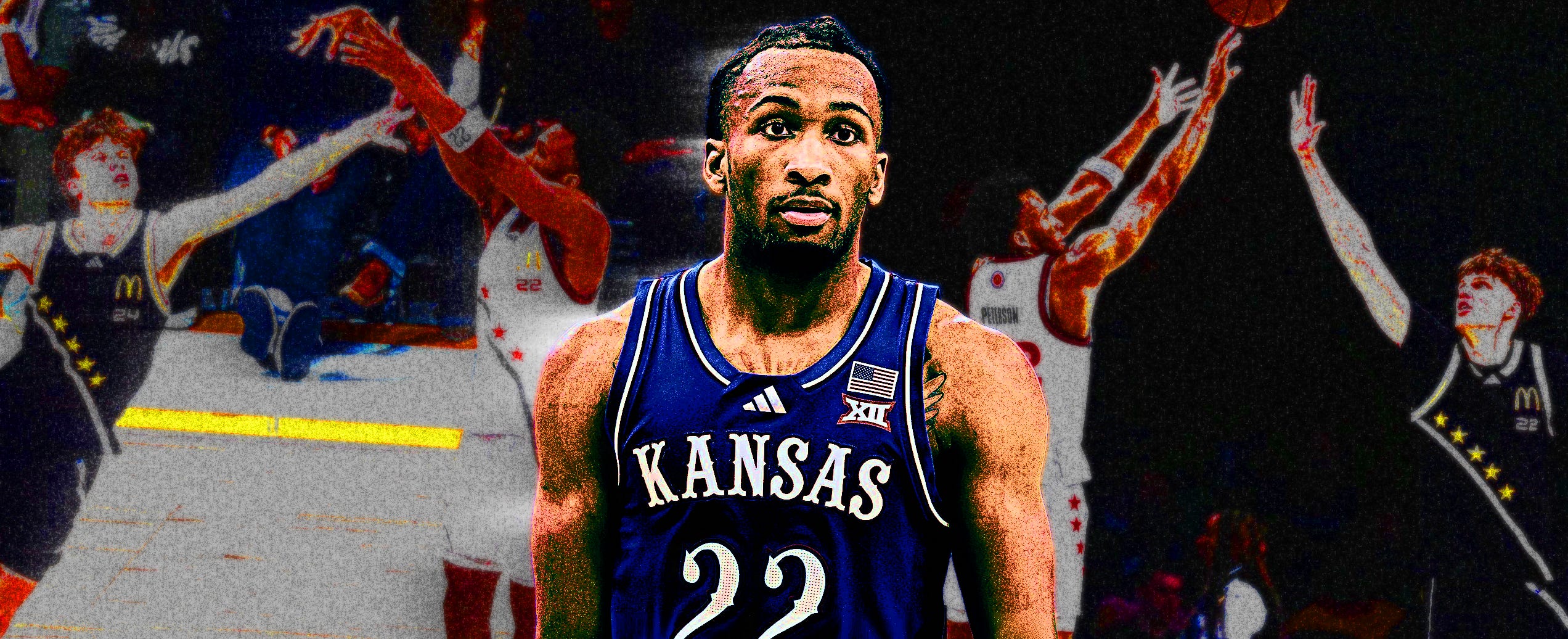Dissecting Darryn Peterson’s Jumper
Quinn Fishburne provides an in-depth analysis of Darryn Peterson's shot mechanics and prior shooting production.

It took Darryn Peterson 316 days to finally supplant AJ Dybantsa as the #1-ranked player in the nation, doing so on the back of a dominant senior season at Prolific Prep, filled with flashy box scores and impressive growth.
With Peterson making his official collegiate debut in less than a week, I wanted to break down his shooting profile, examining both his track record and mechanics.
Peterson’s shooting development is highlighted by an intriguing upward trajectory, shooting 28.8% on 107 three-point attempts across AAU and FIBA competitions during his sophomore and junior years. He took a jump in his senior season at Prolific Prep, shooting 36.2% on 94 attempts through 13 tracked games. This progress was crucial, as he needed to complement his natural driving skills and ability to create advantages through physicality with being a reliable perimeter shooting threat.
Peterson’s athleticism pops even as a jump shooter, with impressive verticality that creates ample space to get his shot off against contesting defenders. This elevation, while impressive and at times necessary, can create unwanted variables in his mechanics. The longer his shot takes, the more that can go wrong.
The main mechanical issue Peterson struggles with is a right-to-left twist. As he elevates, he swings his right leg to the left, forcing a chain reaction that moves from his feet to his hips, and at times, all the way to his shoulders, eventually turning his entire frame. This mid-air body rotation throws Peterson off-balance by pulling his momentum to one side, creating an unstable landing base when he returns to the ground.
Peterson’s feet highlight this problem clearly. When he begins his shot, they are positioned in line with the basket, but after releasing the shot and landing, his feet have made roughly a 90º turn.
This technique causes uneven weight distribution on his landing, with his right leg swung to the side, forcing the entirety of his body weight to land exclusively on his left leg. Single-leg landing is not only unstable, weakening his mechanical consistency, but also significantly increases lower-limb injury risk. Landing in this position concentrates ground reaction forces (the force exerted by the ground on a body in contact with it) onto one leg, rather than dispersing the force evenly across both legs. This is especially problematic when landing in a twisted stance like Peterson, where his body has turned in the direction of the landing leg, shifting his center of mass and putting significant stress on his knee, ankles, and other ligaments, mainly the anterior cruciate ligament (ACL).1
Momentum is one of the biggest influencers of shot mechanics. If a player comes into a shot with considerable momentum, they either allow it to continue carrying them in their initial direction or must counter it by planting their feet and swinging their body against the momentum in an attempt to align their shot toward the rim.
Footwork is crucial in attempting to harness momentum, with a strong base needed to transfer energy into the ground, like slamming the brakes while driving. In relation to Peterson’s shooting, he has a tendency to let his momentum dictate his mechanics and isn’t strict about slowing himself down, especially as a ball-handler. His footwork needs to be more intentional and focused on jumping forward, in line with his release, rather than twisting to one side.
While generally placing with impressive pace, Peterson can get sped up and rush through his mechanics; the ability to move quickly while going through his shooting form methodically will be crucial to Peterson’s continued growth.
His upper body shot mechanics also struggle to remain consistent, rarely holding his follow-through and dropping his arms before he even lands. His retracting arms lead to a heavy “flicking” at the end of his release, which creates an unideal “push” or “shove” motion. His quick release highlights the lack of poise at times, unnecessarily rushing into tough shots.
Peterson’s lack of consistency in both his upper and lower body is frankly more intriguing than it is alarming, given that he was able to have a solid shooting year without steady mechanics; his ceiling as a shooter could be much higher than anticipated. There were flashes of rhythmic and simplified mechanics throughout last season, proving to some extent that Peterson is capable of making the necessary changes. Even minimal improvement in his mechanics would see a meaningful uptick in his three-point percentage, especially on his catch-and-shoot attempts, where he shot just 25.8% last season.
At Prolific Prep, Peterson carried hefty ball-handling, playmaking, and self-creation responsibilities. While he will undoubtedly have a large share of the offense for the Jayhawks, he will benefit from the chance to toggle between on and off-ball roles, capitalizing on the gravity of his teammates. That should open up higher percentage shots, particularly around the perimeter.
Subscribe to No Ceilings on YouTube:
Gill VS, Tummala SV, Boddu SP, et al., Biomechanics and situational patterns associated with anterior cruciate ligament injuries in the National Basketball Association (NBA). British Journal of Sports Medicine 2023;57:1395-1399.



The thing that irks me the most is how he doesn’t hold is follow through and snakebites it. Very very irritating, even when he’s making shots, to watch. Also, could you break down boozers and AJ’s? Would be nice to the differences
This was a very interesting post. I don't really have much more to say, but you don't get stuff like this at many places and I enjoyed reading it.